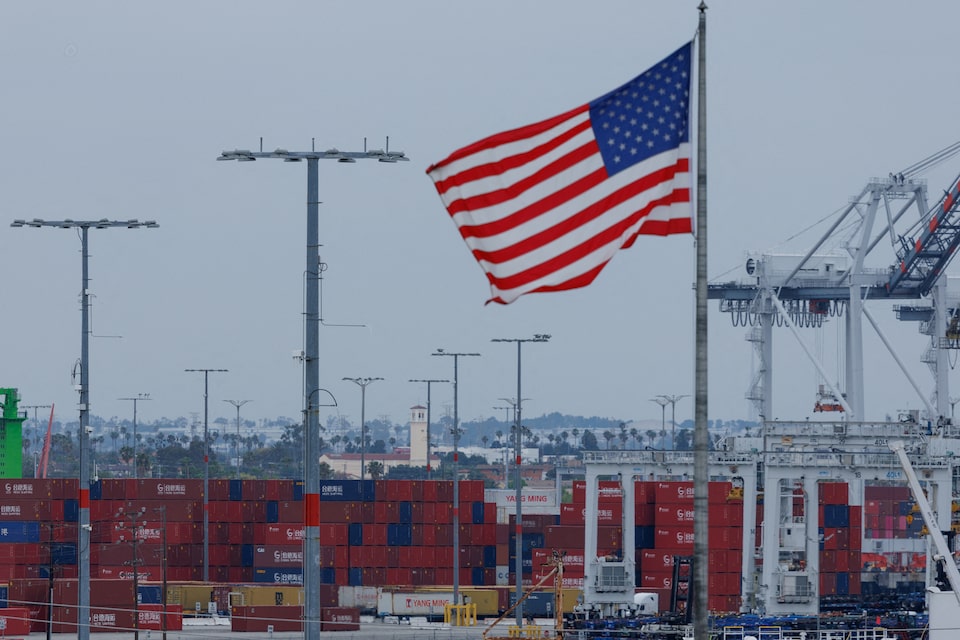Analysis Of New US Duties On Solar Imports From Southeast Asia

Table of Contents
Reasons Behind the Imposition of US Solar Import Duties
The imposition of new duties followed an investigation by the Department of Commerce (DOC) and the International Trade Commission (ITC). These investigations were spurred by allegations of unfair trade practices and circumvention of previous anti-dumping and countervailing duties levied on Chinese solar manufacturers.
-
Allegations of Circumvention: The core issue revolves around claims that Chinese solar manufacturers are circumventing existing tariffs by shifting production to Southeast Asian countries like Vietnam, Cambodia, Malaysia, and Thailand. This allows them to effectively bypass the tariffs while maintaining market share.
-
Unfair Trade Practices: Concerns about unfair pricing practices and government subsidies provided to Southeast Asian manufacturers further fueled the investigation. These practices are alleged to give them an unfair competitive advantage in the US market.
-
Chinese Manufacturing Shift: The significant presence of Chinese companies setting up manufacturing facilities in Southeast Asia is a key element in this trade dispute. This strategy effectively allows them to continue supplying the US market while seemingly complying with existing regulations.
-
Domestic Lobbying: Domestic US solar manufacturers have actively lobbied for increased tariffs, arguing that they need protection from what they see as unfairly priced imports to foster domestic growth and job creation. These lobbying efforts played a significant role in the ultimate decision to impose these new duties.
Economic Impact of the US Solar Import Duties
The economic consequences of these US solar import duties are far-reaching and affect multiple stakeholders.
Impact on US Solar Energy Projects:
- Increased Costs: The tariffs directly translate to higher prices for solar panels, significantly increasing the cost of solar installations across the US. This makes solar energy less competitive against traditional fossil fuels.
- Project Delays: Higher costs and supply chain disruptions may lead to delays in the completion of numerous solar energy projects, hindering the expansion of renewable energy infrastructure.
- Reduced Affordability: The increased cost of solar energy negatively impacts its affordability and accessibility for consumers, potentially slowing down the adoption of solar power, especially for low-income households.
Impact on Southeast Asian Solar Manufacturers:
- Job Losses: The reduced demand for solar panels from the US market could result in significant job losses in the Southeast Asian manufacturing sector.
- Revenue Reduction: Southeast Asian solar manufacturers will experience a substantial reduction in export revenue, potentially impacting their financial stability and future investment.
- Retaliatory Measures: The imposition of these tariffs could trigger retaliatory measures from affected Southeast Asian countries, potentially escalating the trade dispute and negatively impacting other sectors.
Impact on the Global Solar Supply Chain:
- Supply Disruptions: The US market is a significant consumer of solar panels. The tariffs create uncertainty and potential disruptions in the global supply chain, impacting the availability of solar panels worldwide.
- Global Price Increases: Reduced supply and increased demand from other regions could lead to a general increase in global solar panel prices, affecting solar energy projects globally.
- Market Shift: The trade dispute could significantly alter the dynamics of the global solar market, prompting companies to re-evaluate their sourcing and manufacturing strategies.
Impact on US Solar Energy Growth and the Clean Energy Transition
The new duties pose a significant challenge to the Biden administration's ambitious clean energy goals. The increased cost of solar energy could slow down the transition to renewable energy sources in the US, hindering efforts to combat climate change and achieve energy independence. This could lead to a decrease in the adoption rate of renewable energy, impacting the overall goal of carbon reduction. Potential policy responses to mitigate these negative consequences include exploring alternative sources of solar panels, investing in domestic manufacturing, and renegotiating trade agreements. The long-term implications for US energy independence are significant and require careful consideration.
Potential Future Scenarios and Policy Responses
The new duties present both challenges and opportunities. Several future scenarios are possible:
-
Increased Domestic Manufacturing: The tariffs might incentivize investment in domestic solar panel manufacturing in the US, potentially creating jobs and reducing reliance on foreign imports. This would depend on the ability of US manufacturers to compete on price and scale.
-
Trade Agreement Negotiations: The US government could negotiate new trade agreements with Southeast Asian countries to address the concerns of unfair trade practices and resolve the dispute.
-
Alternative Solar Panel Sources: The US could explore sourcing solar panels from other countries to mitigate supply chain disruptions caused by the tariffs. This could involve developing relationships with manufacturers in other regions.
-
Tariff Review and Modification: The imposed duties could be reviewed and potentially modified based on future economic developments and trade negotiations.
The long-term impact on US-Southeast Asia trade relations is a crucial factor to consider. These duties could strain relationships, leading to trade tensions that affect other industries beyond solar energy.
Conclusion
The new US duties on solar imports from Southeast Asia present a complex challenge with far-reaching consequences. Increased costs, supply chain disruptions, and setbacks to renewable energy goals are significant concerns. The situation necessitates a careful examination of the economic impacts on both the US and Southeast Asian economies. Further analysis and informed discussion are vital to navigate the complexities of US solar import duties and to develop effective strategies for a sustainable and affordable solar energy future in the US. Staying informed about developments in US trade policy relating to solar energy is crucial for all stakeholders. Continuous monitoring of the situation and potential policy changes regarding solar panel tariffs is highly recommended.

Featured Posts
-
 Secure Your Glastonbury 2025 Ticket Resale Information And Tips
May 30, 2025
Secure Your Glastonbury 2025 Ticket Resale Information And Tips
May 30, 2025 -
 Gorillazs 25th Anniversary House Of Kong Exhibition And Exclusive London Shows
May 30, 2025
Gorillazs 25th Anniversary House Of Kong Exhibition And Exclusive London Shows
May 30, 2025 -
 Ticketmaster Virtual Venue La Evolucion De La Compra De Entradas
May 30, 2025
Ticketmaster Virtual Venue La Evolucion De La Compra De Entradas
May 30, 2025 -
 Real Time Stock Market Data Dow S And P 500 May 29th
May 30, 2025
Real Time Stock Market Data Dow S And P 500 May 29th
May 30, 2025 -
 Monte Carlo Masters Alcaraz Claims Title Following Musetti Injury
May 30, 2025
Monte Carlo Masters Alcaraz Claims Title Following Musetti Injury
May 30, 2025
